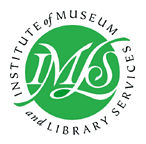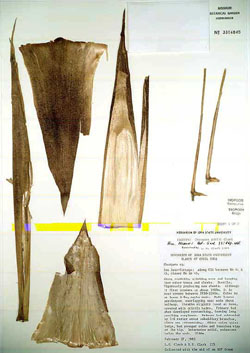 |
 | |
| Preserving and Digitizing Plant Images: Linking Plant Images and Databases for Public Access Completed November 2000 | ||
Leaf MicroLumina Demo
A vital part of the IMLS project is choosing and defining a system by which the type specimens and slides in the three targeted collections can be efficiently converted to digital images for use on the World Wide Web. The first step in this process was to determine whether a digital scanning camera would be a better tool to use for this project than the Kodak PhotoCD technology already in use by the Web Group for the W3 TROPICOS Project.
After researching several options for digitizing images, we decided that the Leaf MicroLumina digital scanning camera might be a good option for the IMLS project, based on its specifications. The Leaf camera is used extensively in scientific settings because of its extremely high resolution (2700 x 3400 pixels, which is equivalent to 600 dpi on a 4 x 5 output or 300 dpi on an 8.5 x 11 output). It uses a plug-in for Adobe Photoshop, which appealed to us because there are several highly skilled Photoshop users in the Web Group who are accustomed to editing specimen images.
With the cooperation of Boyce Scientific, we arranged a demonstration of the camera with a local company that was using the camera to take high-resolution photos of mechanical equipment for failure analysis. Everyone who attended the demo was impressed with the high quality of the digital images we were able to obtain of the specimens we took along as examples, but we had some questions about the color quality and the ability of the camera to function adequately with the equipment we already owned.
We arranged a demo of the Leaf camera in our office, using our copy stand, lens, and lighting system. Boyce Scientific provided the camera, a ring light, and a PC that was already configured for the Leaf camera. Two representatives set up the camera and walked us through a typical scan. Initially the scans took far too long (up to 15 minutes) to be practical for us, but as we worked with the light levels the scanning process evened out to average around 10 minutes per scan. The color levels were still too far off to be useful, but in talking with the distributor of the camera (ElectroImage) and reading the manual we found that an infrared cut filter would remove the odd blue cast that we saw on the scanned images. We attached the filter and had much better results.
 |
 |
| Fig. 1: Image from the Leaf MicroLumina. (Click for full view) |
Fig. 2: Image from analog camera, from Kodak PhotoCD. (Click for full view) |
We were dissatisfied with the Leaf camera for several reasons. One of the most important reasons for us was a bar of color that ran through every scan. Because low-frequency lights can cause this problem, we eliminated the overhead fluorescent lights in the office. An ElectroImage technical support analyst suggested that the problem might be in the camera, so we contacted the camera's manufacturer. A technical support analyst there said that the problem was due to flickering lights, so we eliminated the modeling lights we had been using to fill in the edges of the specimens. That also had no effect.
We were fairly certain that the lighting problems we were experiencing (note the dark corners of Fig. 1) would be eliminated by using larger, continuous lighting, but no adequate lighting systems were available for us to use.
Images were still taking at least 10 minutes from prescan to final scan, and there was still some editing to be done to improve contrast and color balance, especially in the labels and some of the finer details of the specimens. While the images we were able to create were impressive in their detail and resolution, we finally determined that the Leaf MicroLumina probably would not meet our need for producing high-quality images in a time-efficient manner.